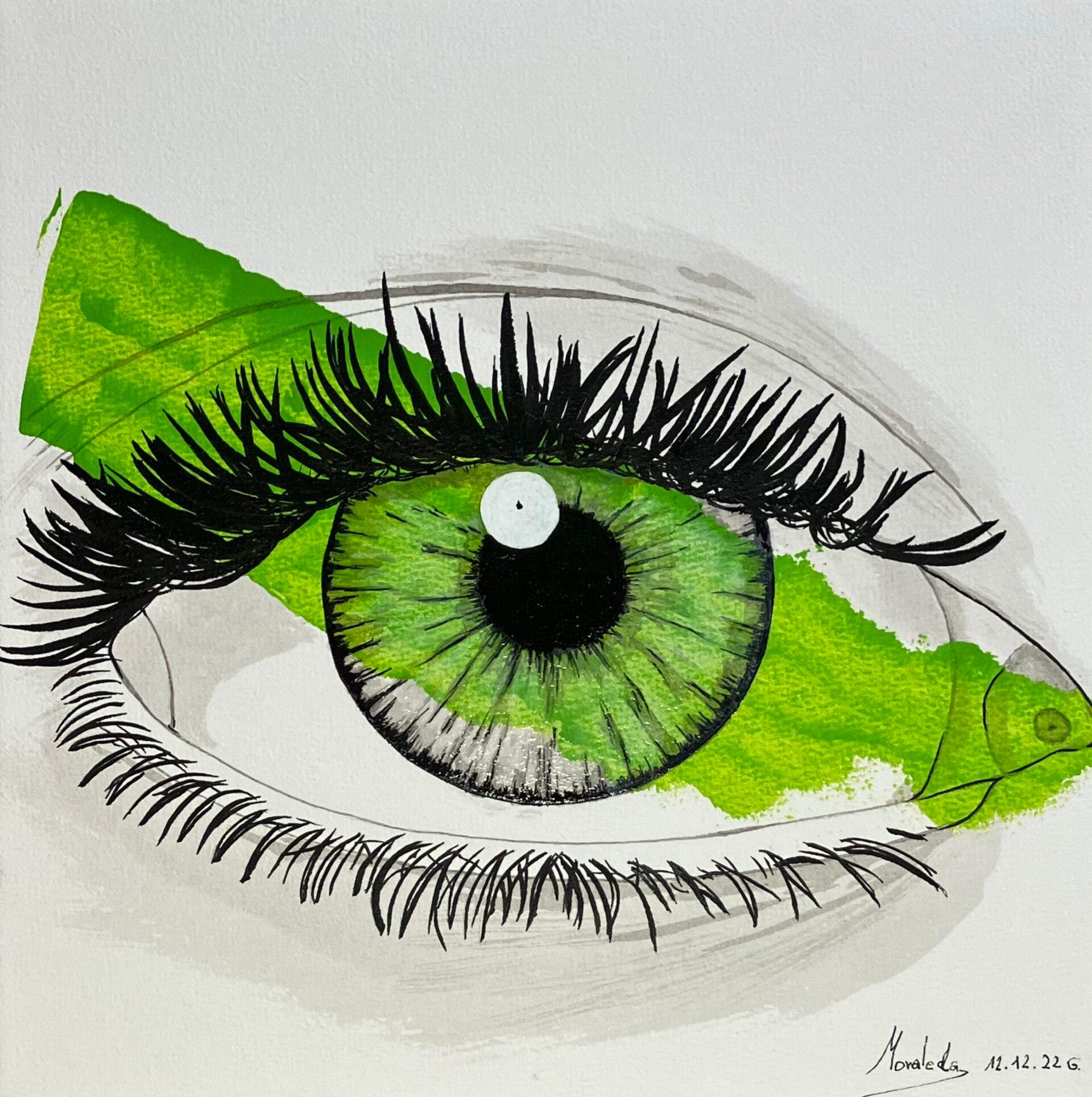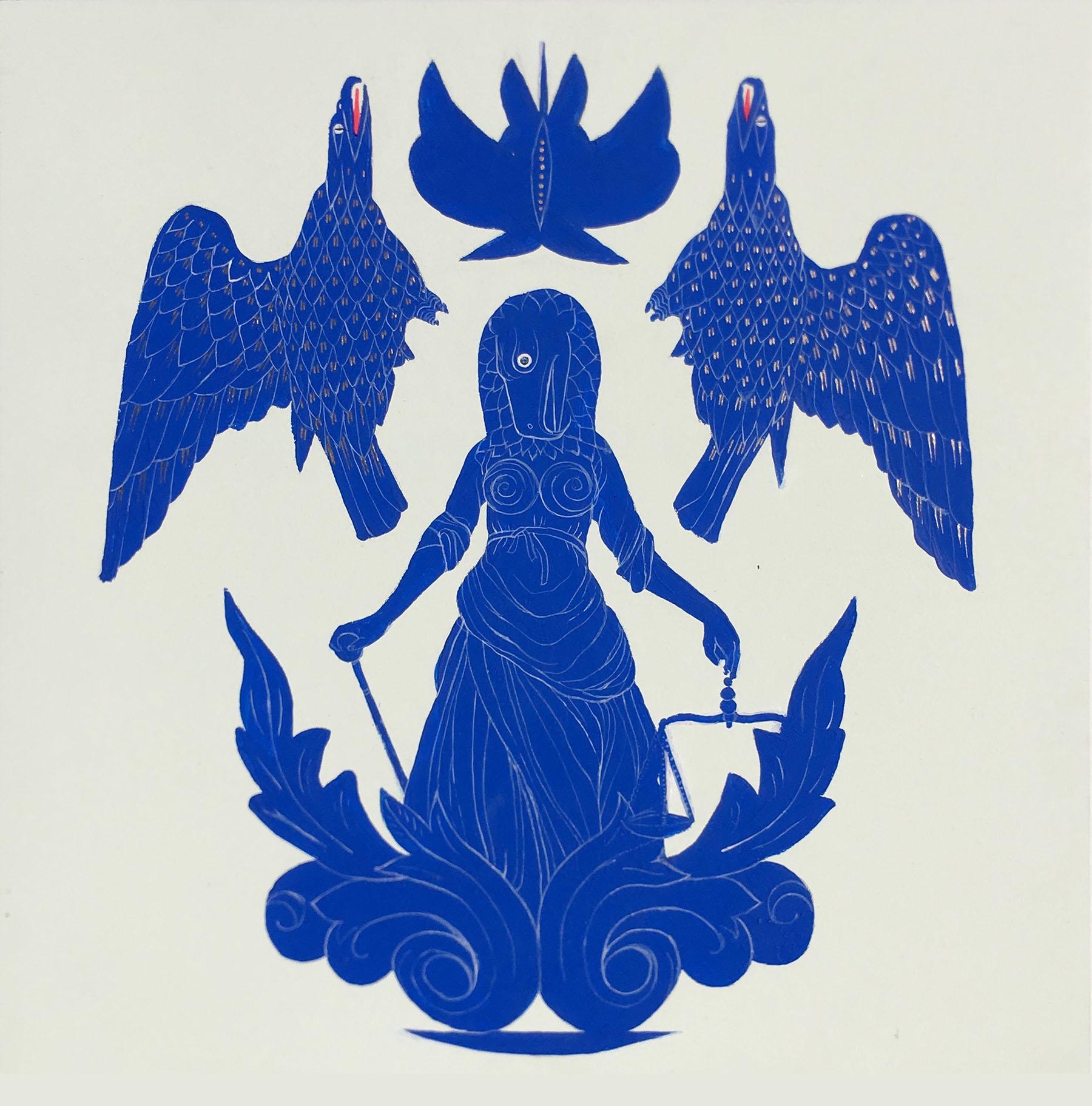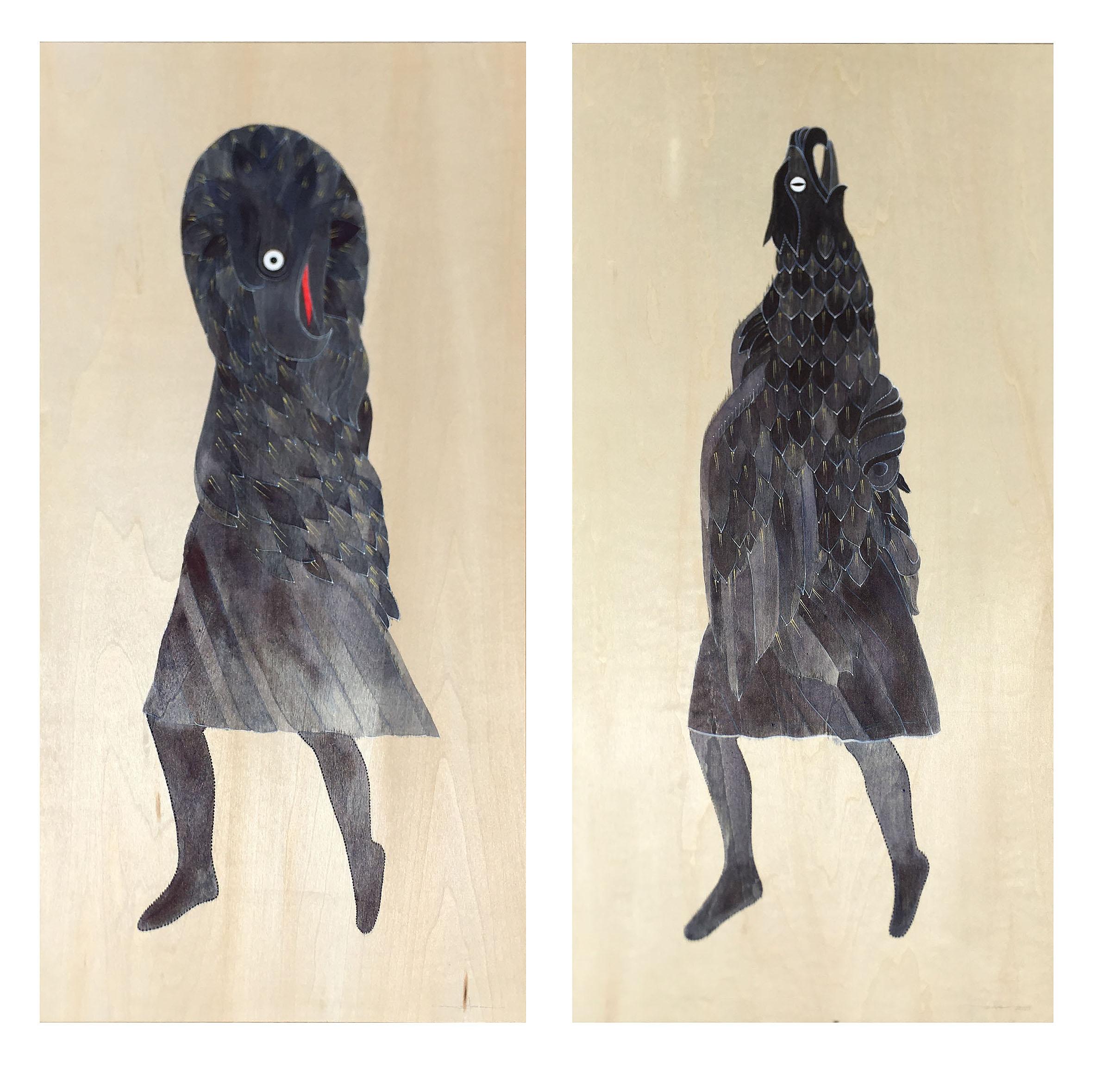Items Similar to "The Embrace", Story Illustration for Cosmopolitan Magazine, August 1951
Want more images or videos?
Request additional images or videos from the seller
1 of 6
Alex Ross"The Embrace", Story Illustration for Cosmopolitan Magazine, August 19511951
1951
About the Item
Date: 1951
Medium: Gouache, Pen and Ink on Board
Dimensions: 12.75" x 18.00"
Signature: Signed Lower Left
The Embrace. Story illustration for "How About Tonight?" by John D. Hess, published in Cosmopolitan magazine, August 1951.
About the Seller
5.0
Recognized Seller
These prestigious sellers are industry leaders and represent the highest echelon for item quality and design.
Gold Seller
These expertly vetted sellers are highly rated and consistently exceed customer expectations.
Established in 1995
1stDibs seller since 2016
107 sales on 1stDibs
Typical response time: 5 hours
- ShippingRetrieving quote...Ships From: Fort Washington, PA
- Return PolicyA return for this item may be initiated within 14 days of delivery.
More From This SellerView All
- Horse RaceLocated in Fort Washington, PASigned Lower Right Framed under glassCategory
20th Century Figurative Paintings
MaterialsInk, Charcoal, Mixed Media, Watercolor, Board, Pen
- Cadillac Fleetwood Transformable Town CabrioletLocated in Fort Washington, PASignature: Signed Lower Left Catalogue advertisement for Cadillac Motor Car Company, 1927Category
1920s Figurative Paintings
MaterialsWatercolor, Ink, Board, Pen
- The Soldiers' Charge, Carter's Monthly Magazine CoverBy Joseph Christian LeyendeckerLocated in Fort Washington, PADate: 1898 Medium: Ink and Gouache on Paper Affixed to Board Dimensions: 16.50" x 12.00" Signature: Signed Lower Left Carter's Monthly, March 1898, cover illustration. Decades lat...Category
1890s Figurative Paintings
MaterialsPaper, Ink, Gouache, Board
- After the TripBy Harry BeckhoffLocated in Fort Washington, PAMedium: Watercolor and Pen and Ink on Paper Dimensions: 13.75" x 8.88" Signature: Signed Upper Right Exhibited: Masters of the Golden Age: Harvey Dunn and His Students South Dakota Art Museum, Brookings, South Dakota May 5, 2015 - September 13, 2015 Norman Rockwell Museum...Category
Mid-20th Century Figurative Paintings
MaterialsInk, Paper, Watercolor, Pen
- Twas The Night Before ChristmasBy Jessie Willcox SmithLocated in Fort Washington, PAMedium: Gouache and Watercolor on Board Sight Size 18.00" x 17.00", Framed 25.00" x 24.00" "Twas The Night Before Christmas" by Clemen...Category
1910s Figurative Paintings
MaterialsGouache, Watercolor, Board
- The Coiffure, Collier's Magazine CoverBy Frank Xavier LeyendeckerLocated in Fort Washington, PAApproximate Date: Apr 23, 1903 Medium: Gouache on Board Signature: Signed Lower Right Dimensions: 22.50" x 15.50"Category
Early 1900s Figurative Paintings
MaterialsGouache, Board
You May Also Like
- The Abduction of the Sabine Women , a Renaissance drawing by Biagio PupiniLocated in PARIS, FRThis vigorous drawing has long been attributed to Polidoro da Caravaggio: The Abduction of the Sabine Women is one of the scenes that Polidoro depicted between 1525 and 1527 on the façade of the Milesi Palazzo in Rome. However, the proximity to another drawing inspired by this same façade, kept at the Ecole des Beaux-Arts, and to other drawings inspired by Polidoro kept at the Musée du Louvre, leads us to propose an attribution to Biagio Pupini, a Bolognese artist whose life remains barely known, despite the abundant number of drawings attributed to him. 1. Biagio Pupini, a Bolognese artist in the light of the Roman Renaissance The early life of Biagio Pupini, an important figure of the first half of the Cinquecento in Bologna - Vasari mentions him several times - is still poorly known. Neither his date of birth (probably around 1490-1495) nor his training are known. He is said to have been a pupil of Francesco Francia (1450 - 1517) and his name appears for the first time in 1511 in a contract with the painter Bagnacavallo (c. 1484 - 1542) for the frescoes of a church in Faenza. He then collaborated with Girolamo da Carpi, at San Michele in Bosco and at the villa of Belriguardo. He must have gone to Rome for the first time with Bagnacavallo between 1511 and 1519. There he discovered the art of Raphael, with whom he might have worked, and that of Polidoro da Caravaggio. This first visit, and those that followed, were the occasion for an intense study of ancient and modern art, as illustrated by his abundant graphic production. Polidoro da Caravaggio had a particular influence on the technique adopted by Pupini. Executed on coloured paper, his drawings generally combine pen, brown ink and wash with abundant highlights of white gouache, as in the drawing presented here. 2. The Abduction of the Sabine Women Our drawing is an adaptation of a fresco painted between 1525 and 1527 by Polidoro da Caravaggio on the façade of the Milesi Palace in Rome. These painted façades were very famous from the moment they were painted and inspired many artists during their stay in Rome. These frescoes are now very deteriorated and difficult to see, as the palace is in a rather narrow street. The episode of the abduction of the Sabine women (which appears in the centre of the photo above) is a historical theme that goes back to the origins of Rome and is recounted both by Titus Livius (Ab Urbe condita I,13), by Ovid (Fasti III, 199-228) and by Plutarch (II, Romulus 14-19). After killing his twin brother Romus, Romulus populates the city of Rome by opening it up to refugees and brigands and finds himself with an excess of men. Because of their reputation, none of the inhabitants of the neighbouring cities want to give them their daughters in marriage. The Romans then decide to invite their Sabine neighbours to a great feast during which they slaughter the Sabines and kidnap their daughters. The engraving made by Giovanni Battista Gallestruzzi (1618 - 1677) around 1656-1658 gives us a good understanding of the Polidoro fresco, allowing us to see how Biagio Pupini reworked the scene to extract this dynamic group. With a remarkable economy of means, Biagio Pupini takes over the left-hand side of the fresco and depicts in a very dense space two main groups, each consisting of a Roman and a Sabine, completed by a group of three soldiers in the background (which seems to differ quite significantly from Polidoro's composition). The balance of the drawing is based on a very strongly structured composition. The drawing is organised around a median vertical axis, which runs along both the elbow of the kidnapped Sabine on the left and the foot of her captor, and the two main diagonals, reinforced by four secondary diagonals. This diamond-shaped structure creates an extremely dynamic space, in which centripetal movements (the legs of the Sabine on the right, the arm of the soldier on the back at the top right) and centrifugal movements (the arm of the kidnapper on the left and the legs of the Sabine he is carrying away, the arm of the Sabine on the right) oppose each other, giving the drawing the appearance of a whirlpool around a central point of support situated slightly to the left of the navel of the kidnapper on the right. 3. Polidoro da Caravaggio, and the decorations of Roman palaces Polidoro da Caravaggio was a paradoxical artist who entered Raphael's (1483 - 1520) workshop at a very young age, when he oversaw the Lodges in the Vatican. Most of his Roman work, which was the peak of his career, has disappeared, as he specialised in facade painting, and yet these paintings, which are eminently visible in urban spaces, have influenced generations of artists who copied them abundantly during their visits to Rome. Polidoro Caldara was born in Caravaggio around 1495-1500 (the birthplace of Michelangelo Merisi, known as Caravaggio, who was born there in 1571), some forty kilometres east of Milan. According to Vasari, he arrived as a mason on the Vatican's construction site and joined Raphael's workshop around 1517 (at the age of eighteen according to Vasari). This integration would have allowed Polidoro to work not only on the frescoes of the Lodges, but also on some of the frescoes of the Chambers, as well as on the flat of Cardinal Bibiena in the Vatican. After Raphael's death in 1520, Polidoro worked first with Perin del Vaga before joining forces with Maturino of Florence (1490 - 1528), whom he had also known in Raphael's workshop. Together they specialised in the painting of palace façades. They were to produce some forty façades decorated with grisaille paintings imitating antique bas-reliefs. The Sack of Rome in 1527, during which his friend Maturino was killed, led Polidoro to flee first to Naples (where he had already stayed in 1523), then to Messina. It was while he was preparing his return to the peninsula that he was murdered by one of his assistants, Tonno Calabrese, in 1543. In his Vite, Vasari celebrated Polidoro as the greatest façade decorator of his time, noting that "there is no flat, palace, garden or villa in Rome that does not contain a work by Polidoro". Polidoro's facade decorations, most of which have disappeared as they were displayed in the open air, constitute the most important lost chapter of Roman art of the Cinquecento. The few surviving drawings of the painter can, however, give an idea of the original appearance of his murals and show that he was an artist of remarkable and highly original genius. 4. The façade of the Milesi Palace Giovanni Antonio Milesi, who commissioned this palace, located not far from the Tiber, north of Piazza Navona, was a native of the Bergamo area, like Polidoro, with whom he maintained close friendly ties. Executed in the last years before the Sack of Rome, around 1526-1527, the decoration of Palazzo Milesi is considered Polidoro's greatest decorative success. An engraving by Ernesto Maccari made at the end of the nineteenth century allows us to understand the general balance of this façade, which was still well preserved at the time. The frescoes were not entirely monochrome, but alternated elements in chiaroscuro simulating marble bas-reliefs and those in ochre simulating bronze and gold vases...Category
16th Century Old Masters Figurative Drawings and Watercolors
MaterialsInk, Gouache, Pen
- Te ves?Located in MADRID, ESLas emociones negativas retienen toda la atención, impidiendo atender otra cosa.Category
2010s Figurative Paintings
MaterialsInk, Gouache, Pen
- Me ves?Located in MADRID, ESCuando hace frío comparto mi abrigo, si no tengo abrigo, comparto el frío.Category
2010s Figurative Paintings
MaterialsInk, Gouache, Pen
- Sonia Spider Quenell, Watercolor portrait on archive paper.By Manuel SantelicesLocated in Miami Beach, FLSonia "Spider" Quenell by Manuel Santelices Ink pen, watercolor, and gouache Image size: 11" x 14" Unframed 2022 Manuel Santelices explores the world of fashion, society, and pop c...Category
21st Century and Contemporary Contemporary Figurative Drawings and Water...
MaterialsInk, Paper, Watercolor, Gouache, Pen
- Blue JusticeBy June GlassonLocated in Denver, COJune Glasson is an artist, illustrator, and designer. She live in Laramie, WY. Her paintings have been exhibited at the National Portrait Gallery in London, Nature Morte Gallery in B...Category
2010s Contemporary Abstract Paintings
MaterialsInk, Gouache, Wood Panel, Pen
- The Eagle Ladies (A & B)By June GlassonLocated in Denver, COJune Glasson is an artist, illustrator, and designer. She live in Laramie, WY. Her paintings have been exhibited at the National Portrait Gallery in London, Nature Morte Gallery in B...Category
2010s Contemporary Paintings
MaterialsGouache, Pen, Wood Panel, Ink
Recently Viewed
View AllMore Ways To Browse
August Vintage
Illustration Art 1950
August John
Magazine Story Illustration
Painting By Ross
Cosmopolitan Magazine
Vintage Cosmopolitan
Street Scene Painting Italy
The Pope
Bruce La Bruce
Rich Man
Mother And Child Signed
Red Arrow
Oil Painting Of Sisters
Dog Show
19th Century Painting People
Soviet Art Painting
Contemporary Side Board





